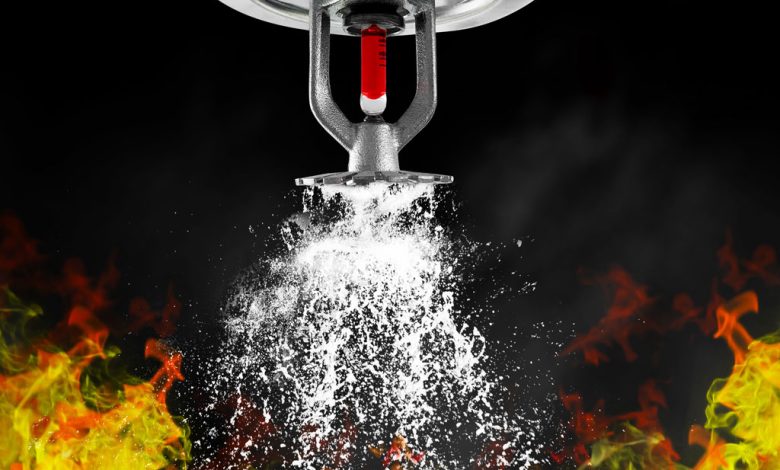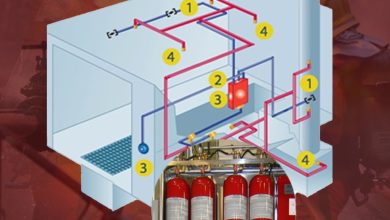The Role of Fire Hydrant Systems in Fire Safety Compliance
Fire hydrant system

A fire hydrant system is a crucial element of fire safety in commercial buildings. Not only does it serve as a vital resource during fire emergencies, but it also plays a key role in ensuring that businesses comply with fire safety regulations. Regular inspections, proper installation, and maintenance of fire hydrants are essential to meet legal and safety standards. In this blog, we will explore how fire hydrant systems contribute to fire safety compliance and why they are indispensable in keeping buildings safe from fire hazards.
At Sri Triveni Crafts, we provide high-quality fire hydrant systems designed to meet all regulatory standards and ensure maximum safety for your business. Read on to understand the critical role these systems play in protecting lives, property, and ensuring compliance with fire safety regulations.
The Importance of Fire Hydrant System Maintenance
Safety and Reliability
A well-maintained fire hydrant system ensures reliability during emergencies. Routine inspections help identify potential issues like leaks, blockages, or faulty components. If a hydrant malfunctions in an emergency, it can lead to devastating consequences. Regular maintenance helps avoid such risks, protecting your property, employees, and customers.
Compliance with Regulations
Local laws often require businesses to maintain fire hydrant systems according to fire safety standards. Failing to meet these regulations can result in fines, penalties, or higher insurance premiums. Regular inspections and maintenance help ensure that your business stays compliant with safety laws.
Key Steps for Maintaining a Fire Hydrant System
1. Routine Inspections
Regular inspections are the foundation of any fire hydrant maintenance plan. A certified fire safety expert should inspect the hydrants at least once a year or more often if local regulations require it. These inspections include checking the hydrants’ overall condition, verifying valve functionality, and ensuring water pressure meets required standards.
Key inspection areas include:
-
Hydrant Visibility: Ensure hydrants are unobstructed by plants, snow, or debris.
-
Water Flow: Check for blockages and confirm proper water pressure.
-
Valve Condition: Ensure valves are free of rust and operate smoothly.
-
Physical Integrity: Look for cracks or damage that could affect performance.
2. Cleaning the Hydrants
Hydrants can accumulate dirt, rust, or debris over time. Regular cleaning keeps hydrants in good working condition. Remove dirt or leaves around the hydrant, and clean the moving parts. Lubricate valves and nozzles to ensure smooth operation, and check for corrosion.
3. Testing Water Pressure
Regularly test the water pressure in the hydrant system. If the pressure is too low, firefighters won’t have the water flow they need to fight a fire. Professionals should measure water flow and pressure to ensure the hydrant system can perform effectively in an emergency.
During testing:
-
Check Pressure: Confirm that the water pressure meets the required minimum.
-
Simulate Emergency: Open the hydrant fully to test its response under emergency conditions.
4. Check for Leaks and Damage
Leaks or damage can compromise the fire hydrant system’s effectiveness. Regular maintenance checks are crucial to find leaks, cracks, or any other issues. Address these promptly to maintain efficiency and avoid water wastage.
Look for:
-
Leaking Valves or Joints: Ensure all connections are tightly sealed.
-
Cracks or Damage: Inspect hydrant components for visible damage that could affect functionality.
5. Documentation and Record-Keeping
Keep detailed records of inspections, maintenance, and repairs for legal and insurance purposes. These documents prove your compliance with fire safety regulations and can be helpful during audits or insurance claims.
Record:
-
Inspection Dates: Document when inspections were performed.
-
Maintenance Activities: Note all repairs and maintenance conducted.
-
Test Results: Record the results of water pressure tests and any performance checks.
Conclusion
A fire hydrant system is not just a safety measure; it is also a legal requirement for most commercial properties. Regular maintenance, inspections, and proper documentation are necessary to ensure compliance with fire safety regulations. At Sri Triveni Crafts, we specialize in providing fire hydrant systems that meet all legal and safety standards, keeping your property safe and in line with the law. Don’t wait until it’s too late—make sure your fire hydrant system is in excellent condition and ready to protect your property and its occupants in the event of a fire.
FAQs
1. What are the legal requirements for a fire hydrant system in commercial buildings?
Fire hydrant systems are required by law in many regions for commercial properties, with specific regulations based on the building’s size, function, and occupancy. Regular inspections and maintenance are mandatory to meet local fire safety codes.
2. How often should a fire hydrant system be inspected?
Fire hydrant systems should be inspected at least once a year. However, additional checks may be required based on local regulations and the specific needs of the building.
3. What happens if my fire hydrant system is not compliant with regulations?
Failure to maintain a compliant fire hydrant system can result in fines, legal issues, and increased insurance premiums. In some cases, it may also lead to serious consequences in the event of a fire.
4. How can I ensure my fire hydrant system remains in good working condition?
Regular inspections, proper maintenance, cleaning, and timely repairs are essential to ensure that your fire hydrant system remains functional and compliant with safety standards.
5. What should I do if my fire hydrant system is not working properly?
If you notice any issues with your fire hydrant system, such as low water pressure or visible damage, contact a professional immediately to assess the system and perform necessary repairs or replacements.



